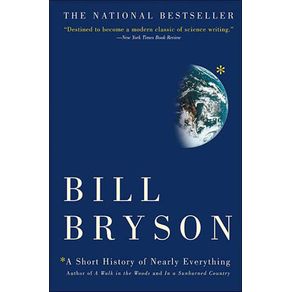From primordial nothingness to this very moment, A Short History of Nearly Everything reports what happened and how humans figured it out. To accomplish this daunting literary task, Bill Bryson uses hundreds of sources, from popular science books tointerviews with luminaries in various fields. His aim is to help people like him, who rejected stale school textbooks and dry explanations, to appreciate how we have used science to understand the smallest particles and the unimaginably vast expansesof space. With his distinctive prose style and wit, Bryson succeeds admirably. Though A Short History clocks in at a daunting 500-plus pages and covers the same material as every science book before it, it reads something like a particularly detailednovel (albeit without a plot). Each longish chapter is devoted to a topic like the age of our planet or how cells work, and these chapters are grouped into larger sections such as "The Size of the Earth" and "Life Itself." Bryson chats with expertslike Richard Fortey (author of Life and Trilobite) and these interviews are charming. But it's when Bryson dives into some of science's best and most embarrassing fights--Cope vs. Marsh, Conway Morris vs. Gould--that he finds literary gold.



